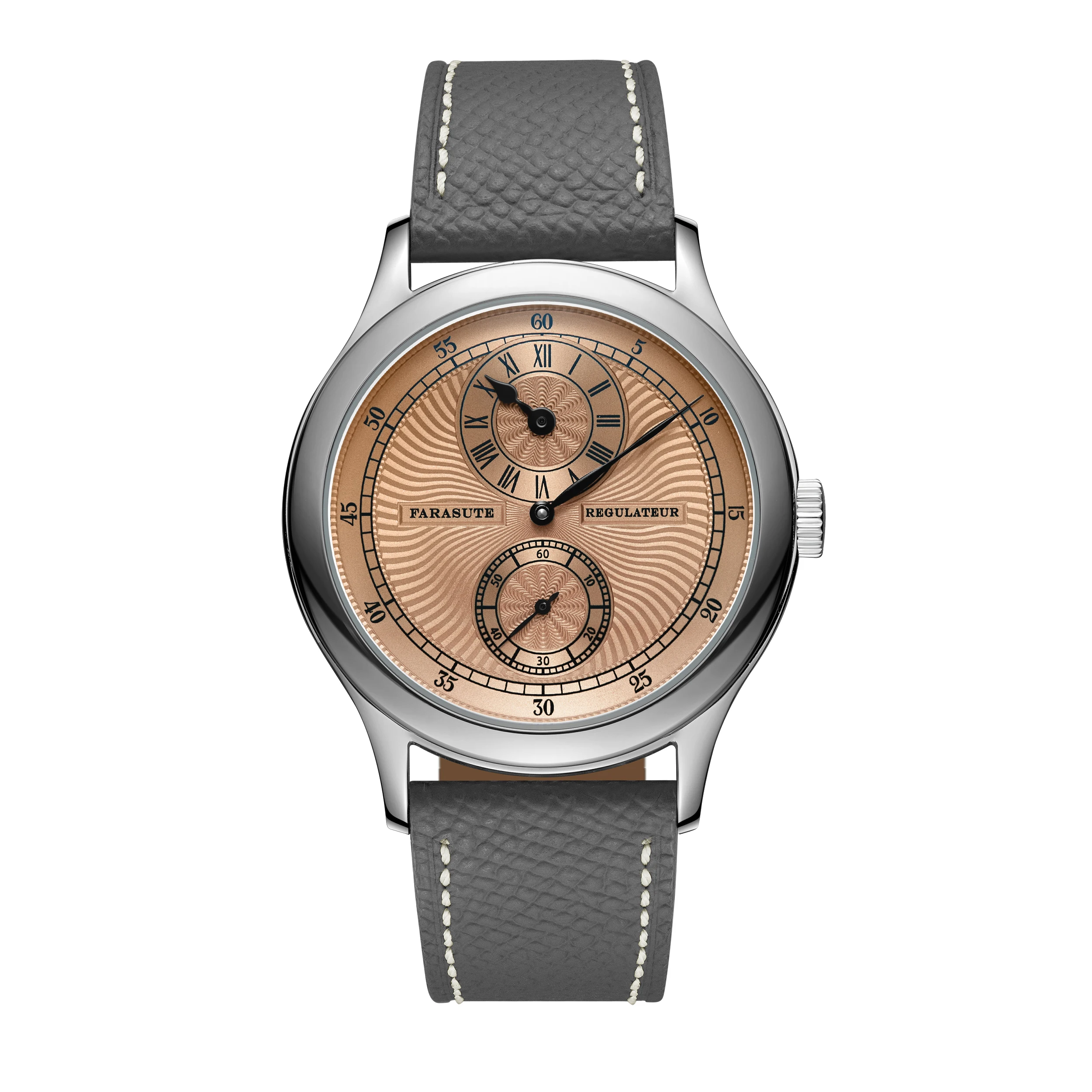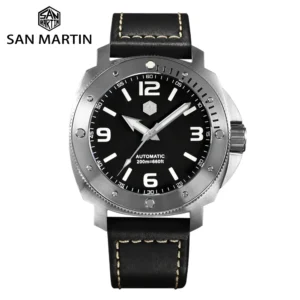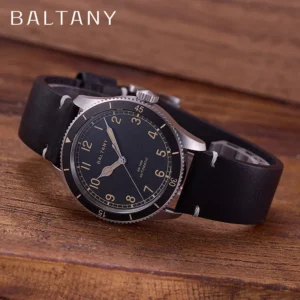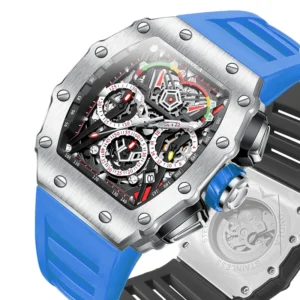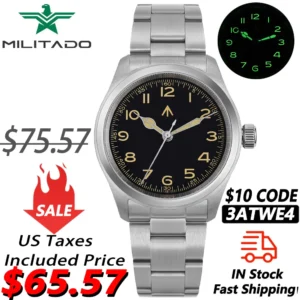Introduction: The Evolution of Tactical Timekeeping
The tactical field watch stands as a remarkable example of how necessity drives innovation. More than just timekeeping devices, these rugged instruments were born from battlefield requirements where reliability could mean the difference between life and death. At their core, tactical field watches adhere to three fundamental principles: durability to withstand harsh conditions, legibility to provide instant time readings under any circumstances, and reliability to function flawlessly when needed most.
What began as an adaptation of pocket watches has evolved into sophisticated timekeeping tools that serve military personnel and outdoor enthusiasts alike. The journey from those early timepieces to modern tactical watches reveals a fascinating story of innovation driven by real-world needs. While technology has advanced dramatically, the foundational design philosophy has remained remarkably consistent—function always precedes form.
The evolution of military field watches reveals a continuous dialogue between combat experience and watchmaking ingenuity. Each conflict introduced new challenges that watchmakers solved through creative engineering, establishing design elements that persist today. Understanding what defines a tactical watch means recognizing how each feature serves a specific purpose born from battlefield lessons.
The Pre-Wristwatch Era: Battlefield Timekeeping Origins (Late 19th Century)
Before wristwatches dominated military timekeeping, pocket watches reigned supreme. Officers would carry these timepieces in protective cases, typically accessing them only when stationary and relatively safe. This arrangement proved increasingly problematic as warfare modernized and coordination between units became more critical.
The limitations of pocket watches in combat were severe. Soldiers needed both hands free to operate weapons, navigate terrain, or carry equipment. Taking a pocket watch out during combat was impractical and potentially dangerous. This fundamental problem led to creative adaptations that would eventually revolutionize how timepieces were worn and designed.
Early solutions included crude “wristlets”—essentially pocket watches attached to leather straps worn around the wrist. These improvised designs began appearing during conflicts like the Boer War, where officers modified their timepieces for easier access. Some military suppliers began producing watches with wire lugs soldered to pocket watch cases, creating rudimentary but functional wristwatches.
Protection features also began to emerge during this transitional period. Wire guards (often called “shrapnel guards”) were fitted over the crystal to prevent damage, while some watches featured hunter-style covers that could be flipped open for time readings and closed to protect the crystal. These early adaptations laid the groundwork for dedicated military evolution from trench to field watches that would soon follow.
The Crucible of World War I: Birth of the True Field Watch (1914-1918)
World War I transformed wristwatches from unusual accessories into essential military equipment. The brutal realities of trench warfare demanded precise coordination between infantry units, artillery batteries, and command posts. Synchronized attacks required synchronized timepieces that could be consulted quickly under fire.
This unprecedented military need drove rapid innovation in watch design:
- Radium luminous dials enabled time reading in dark trenches and during night operations
- Reinforced case designs with fixed lugs increased durability in harsh conditions
- Wire “shrapnel guards” protected glass crystals from damage
- Oversized Arabic numerals and clear minute tracks enhanced readability in chaotic situations
- Waterproofing techniques improved to handle the mud and moisture of trench environments
Perhaps most importantly, WWI established the wristwatch as a masculine tool rather than a feminine accessory. Military contracts demanded unprecedented production volumes, forcing manufacturers to develop more efficient manufacturing techniques. Companies like Waltham, Omega, and many Swiss manufacturers shifted significant resources to military production.
The military necessity forged modern field watch designs that would influence timepiece development for decades. Features we now consider standard—luminous hands, durable cases, and high legibility—were direct responses to battlefield requirements. By war’s end, the wristwatch had proven itself invaluable, and manufacturers had established core design principles that continue to define tactical timepieces today.
Interwar Refinement: From Battlefield Necessity to Technical Standard (1919-1938)
The period between the World Wars saw critical refinements that transformed field watches from wartime necessities into refined technical instruments. As wristwatches gained civilian popularity, manufacturers invested in improving their reliability and functionality—advancements that would ultimately benefit military applications as well.
Technical innovations during this period addressed key vulnerabilities identified during WWI. Waterproofing made significant strides with Rolex’s Oyster case, featuring threaded case backs and screw-down crowns to seal out moisture. Early shock protection systems emerged to safeguard delicate balance assemblies from impact damage, a common failure point in trench conditions.
Aviation’s growing military importance drove specialized development in navigation timepieces. The Longines Weems model, with its rotating bezel for synchronization with radio time signals, represented an early specialized military watch designed for a specific tactical role. German manufacturers began developing the distinctive Flieger designs that would later become iconic military pilot watches.
Perhaps most significantly, this period saw the emergence of formal military specifications for timepieces. Rather than adapting civilian watches, armed forces began defining exact requirements for purpose-built military timepieces. These early standardization efforts laid crucial groundwork for the comprehensive complete history of field watches in military applications that would follow during the coming global conflict.
World War II: The Golden Age of Military Watch Standardization
World War II represented a watershed moment in tactical watch development, as unprecedented global conflict demanded precise, standardized equipment across massive military forces. The era established military specifications that would influence watch design for generations.
Key military specifications and resulting watch designs included:
- The American A-11 specification, produced by Elgin, Waltham, and Bulova, featuring high-contrast black dials, white numerals, and central seconds hands
- British “Dirty Dozen” W.W.W. (Watch, Wrist, Waterproof) watches produced by twelve different manufacturers to identical specifications
- German B-Uhren navigation watches with oversized cases and distinctive triangle markers at 12 o’clock
- Specialized commando watches like the water-resistant models developed for naval operations
Critical innovations that became standard during this period included hacking seconds mechanisms (allowing precise synchronization by stopping the seconds hand when setting time), improved luminous compounds, enhanced water resistance, and widespread shock protection. Materials research accelerated due to wartime resource constraints, leading to more durable case designs and crystal materials.
The standardization of these designs established enduring templates that continue to influence modern tactical automatic watches today. The field watch aesthetic—clean dial, high contrast markings, and durable construction—became firmly established during this period as the archetypal military timepiece.
Cold War Specialization: Diversification of Tactical Timepieces (1946-1980s)
The post-WWII period saw tactical watches diverge into increasingly specialized categories as military branches developed unique requirements for specific operational environments. The Cold War arms race drove technical innovation, while hot conflicts in Korea and Vietnam provided real-world testing grounds for new designs.
Field watches evolved under updated specifications like the American MIL-W-46374, resulting in iconic designs from manufacturers like Benrus, Hamilton, and Stocker & Yale. These watches featured upgraded shock resistance, improved water protection, and more durable case finishes specifically designed for infantry use.
The underwater arena saw explosive development as naval special operations expanded. Purpose-built dive watches emerged, including the Blancpain Fifty Fathoms (originally designed for French combat swimmers) and various Tudor Submariners issued to naval forces. These timepieces featured rotating timing bezels, exceptional water resistance, and enhanced luminosity for underwater operations.
Aviation timepieces continued to specialize with chronograph functions becoming standard for pilot watches. Models like the Breguet Type 20 and Heuer Bundeswehr featured elapsed time measurement capabilities critical for navigation and mission timing.
Significant innovations during this period included:
* Widespread adoption of automatic movements in military watches
* Transition from radium to safer tritium luminescence
* Development of specialized case coatings for improved durability
* Introduction of the G10/NATO strap by the British Ministry of Defence—a simple nylon design that provided security against spring bar failures
This era of specialization established distinct categories of tactical watches that continue with classic field watches still embodying these design principles today.
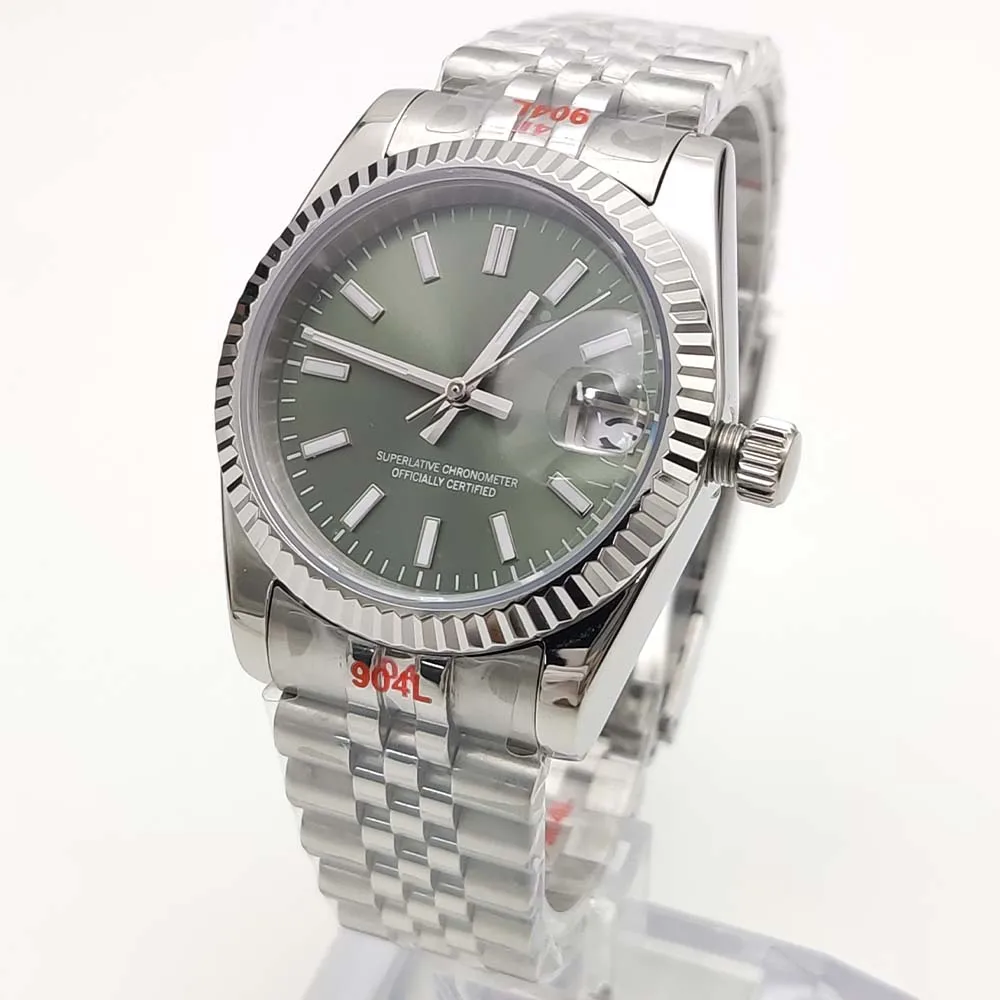
The Quartz Revolution: Digital Precision Meets Tactical Needs
The introduction of quartz technology in the 1970s fundamentally transformed military timekeeping. The unprecedented accuracy, reliability, and affordability of quartz movements led to rapid adoption across military forces worldwide, marking a clear dividing line between traditional mechanical timepieces and modern electronic alternatives.
Quartz technology delivered game-changing advantages for tactical applications:
* Accuracy within seconds per month rather than minutes per week
* Enhanced shock resistance without delicate mechanical parts
* Reduced maintenance requirements ideal for field deployment
* Cost-effective mass production for widespread military issue
The watershed moment came with the 1983 introduction of Casio’s G-Shock, a watch specifically engineered to survive a 10-meter drop. Its revolutionary construction using a suspended movement inside a protective outer case established new benchmarks for durability that traditional designs couldn’t match.
Early digital military watches introduced capabilities beyond simple timekeeping, including chronograph functions, countdown timers, and multiple time zones—all valuable tactical tools. Analog-digital hybrid designs emerged to combine traditional dial legibility with digital precision and functionality.
These developments marked a significant shift in military watch philosophy. While traditional mechanical watches remained in service, many forces transitioned to quartz for standard issue, with mechanical timepieces sometimes retained as backup systems or for specialized roles. Today’s automatic field military watches often pay homage to this heritage while incorporating modern materials and manufacturing techniques.
Material Science Revolution: Modern Case Construction and Components
Advanced materials have dramatically transformed tactical watch performance, enabling unprecedented durability, weight reduction, and resistance to extreme conditions. This revolution has expanded design possibilities while enhancing reliability in challenging environments.
Key material innovations include:
Case materials: Traditional stainless steel has been joined by titanium (offering similar strength at roughly half the weight), advanced polymers (providing exceptional shock absorption), carbon fiber composites (delivering outstanding strength-to-weight ratios), and ceramic (offering extreme scratch resistance)
Crystal materials: The progression from acrylic to mineral glass and ultimately sapphire crystal has vastly improved scratch resistance and clarity, with modern sapphire crystals nearly impossible to scratch in field conditions
Strap innovations: Purpose-developed materials like ballistic nylon, Cordura fabric, and specialized rubber compounds provide comfort, durability, and quick-drying properties essential for tactical applications
These material advancements have enabled watches to withstand previously impossible environmental challenges, including extreme temperature fluctuations, chemical exposure, and crushing depths. Modern titanium automatic watches exemplify how material science has enabled tactical timepieces that combine lightweight wearability with exceptional durability.
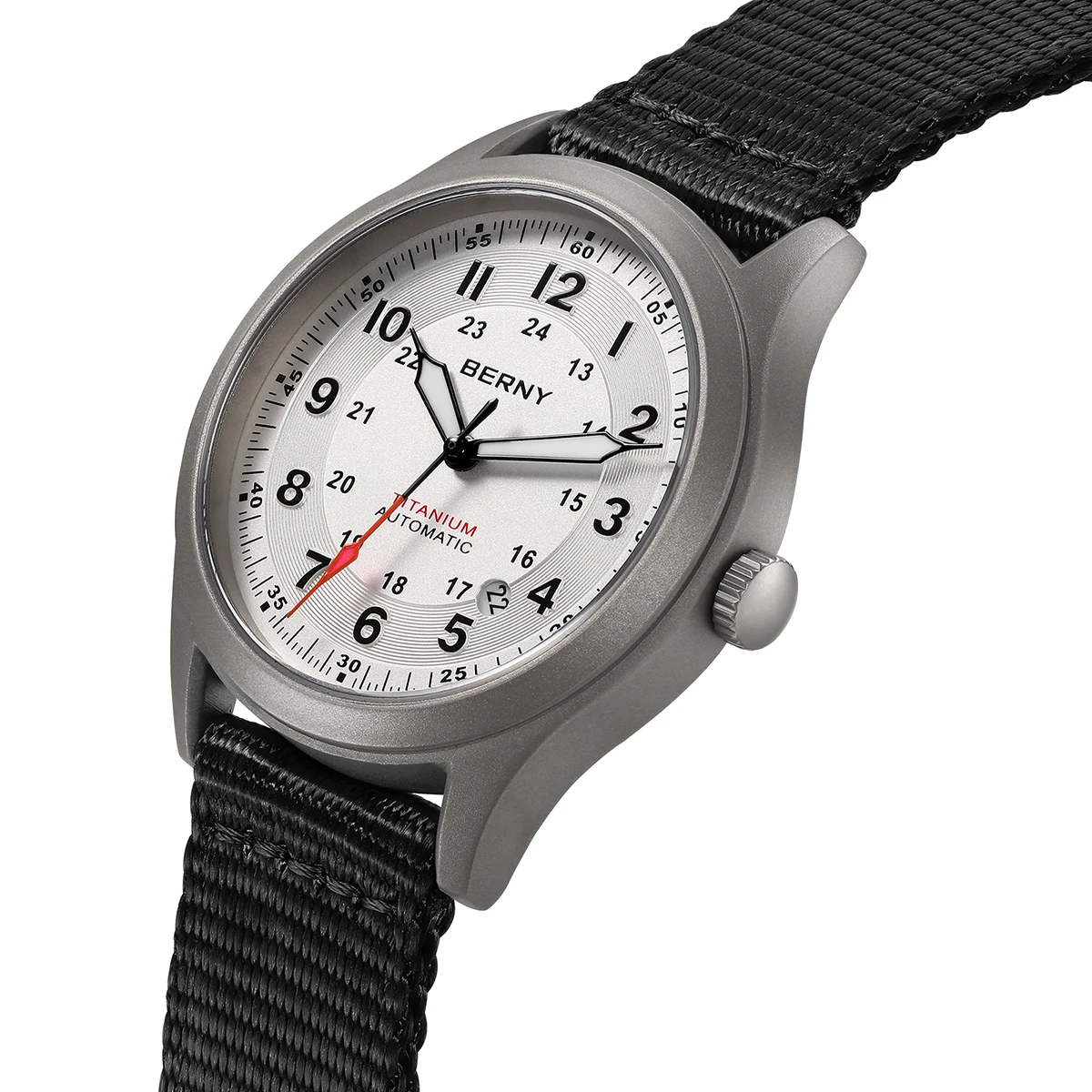
Illumination Technology: From Radium to Tritium Tubes and Beyond
Nighttime legibility has always been a critical requirement for tactical timepieces, driving continuous innovation in illumination technology. The evolution of these systems reflects both technical advancement and growing understanding of safety considerations.
Early tactical watches relied on radium-painted dials, which provided excellent luminosity but eventually proved dangerously radioactive. By midcentury, manufacturers had transitioned to tritium-based paints with lower radiation levels but still sufficient brightness for military applications.
The late 20th century brought significant advancements with photoluminescent compounds like Super-LumiNova, which charge in light and glow for several hours without any radioactive elements. While safer, these materials require light exposure and diminish in brightness over time—a tactical limitation in extended darkness.
Self-powered illumination returned with tritium gas tubes (GTLS technology), which encapsulate radioactive tritium gas in sealed glass tubes coated with phosphor. These provide consistent illumination for years without requiring external light charging, making them ideal for tactical applications. Brands like Luminox, Traser, and Marathon have specialized in this technology.
Digital watches introduced electroluminescent and LED backlighting, offering on-demand illumination but requiring battery power. Modern luminosity in tactical automatic watches continues to evolve with hybrid systems combining multiple technologies to ensure visibility in any operational environment.
The Digital Revolution: Multi-Function Tactical Timepieces
The integration of digital technology has transformed tactical watches from simple timekeepers into comprehensive field tools with capabilities early military watch designers could hardly imagine. Modern multi-function tactical watches serve as miniaturized environmental monitoring stations and navigation tools.
The ABC functions—Altimeter, Barometer, and Compass—represent the foundation of advanced tactical watch capabilities, providing critical environmental data and navigation assistance. GPS integration has further revolutionized field navigation, allowing precise positional awareness without external references.
Power management innovations, particularly solar charging systems, have addressed the critical vulnerability of battery dependence. Modern solar-powered tactical watches can operate indefinitely in field conditions without requiring battery changes that might compromise water resistance.
Specialized tactical functions have emerged for particular operational requirements:
* Ballistic calculators for precision shooting
* Mission timers with specialized countdown and interval functions
* Silent alarm vibration features
* Negative displays for reduced visibility during night operations
The most advanced systems now include wireless connectivity for synchronized operations and data transfer, though this introduces potential security and reliability concerns in military contexts. The balance between advanced functionality and traditional reliability remains a central consideration in modern military-inspired automatic watches design.
Military Inspired Automatic Watches, Rugged Automatic Watches, Tactical Automatic Watches
Price range: $852.14 through $994.60 Select options This product has multiple variants. The options may be chosen on the product pageBronze Automatic Watches, Military Inspired Automatic Watches, Professional Spec Dive Watches
Price range: $1,442.21 through $1,442.82 Select options This product has multiple variants. The options may be chosen on the product pageProfessional Spec Dive Watches, Titanium Automatic Watches
$574.74 Select options This product has multiple variants. The options may be chosen on the product pageClassic Pilot Watches, Military Inspired Automatic Watches
$561.00 Select options This product has multiple variants. The options may be chosen on the product pageRugged Automatic Watches, Unique Automatic Watches
Price range: $228.96 through $231.10 Select options This product has multiple variants. The options may be chosen on the product pageClassic Field Watches, Military Inspired Automatic Watches
Price range: $280.87 through $338.51 Select options This product has multiple variants. The options may be chosen on the product page
Future Horizons: Emerging Technologies in Tactical Timekeeping
The evolution of tactical watches continues with emerging technologies promising to further expand their capabilities while addressing persistent challenges. The coming generation of field timepieces will likely incorporate innovations from multiple disciplines to create even more capable tools for demanding environments.
Advanced energy systems represent one of the most promising development areas. Beyond current solar technology, research into kinetic energy harvesting, improved power management, and new battery chemistries aims to create tactical watches that never need external charging while powering increasingly sophisticated functions.
Material science continues advancing with new composites and manufacturing techniques enabling previously impossible combinations of lightness, strength, and flexibility. Self-healing materials that can repair minor scratches, ultra-lightweight carbon lattice structures, and advanced ceramics may all find applications in future tactical watches.
Integration with broader tactical systems presents both opportunities and challenges. While connectivity enables enhanced situational awareness, it also introduces potential vulnerabilities. Future designs will likely incorporate selective connectivity with rigorous security protocols.
Despite these digital advances, traditional mechanical systems maintain relevance as backup technologies that function regardless of power availability or electronic vulnerabilities. Understanding durability factors in rugged watches remains essential even as technology advances.
The Enduring Legacy: Tactical Design Philosophy in Modern Timepieces
The tactical watch story reveals a remarkable continuity of purpose across more than a century of development. While materials, technologies, and specific features have evolved dramatically, the core principles established on early battlefields still define excellence in tactical timepieces today.
The influence of military watch design extends far beyond actual service timepieces. The clean legibility, robust construction, and functional aesthetics pioneered for battlefield use have inspired countless civilian watches. What began as utilitarian tools have become design icons, with vintage military watch styles continually reinterpreted by modern manufacturers.
Even as digital technology enables unprecedented functionality, the fundamental requirements remain unchanged: a tactical watch must be instantly readable in any conditions, durable enough to withstand extreme environments, and reliably accurate when it matters most. These principles transcend specific technologies or materials.
Sharp Aspect’s collection of rugged automatic watches exemplifies this marriage of tactical heritage with contemporary craftsmanship. While incorporating modern manufacturing techniques and materials, these timepieces honor the design legacy established through generations of field testing in the most demanding environments imaginable.
The tactical field watch stands as a testament to purpose-driven design—where every feature serves a specific function and has been validated through actual use. This honest approach to design explains why these watches continue to appeal not just to military personnel but to anyone who values thoughtful engineering and authentic functionality in an increasingly disposable world.

